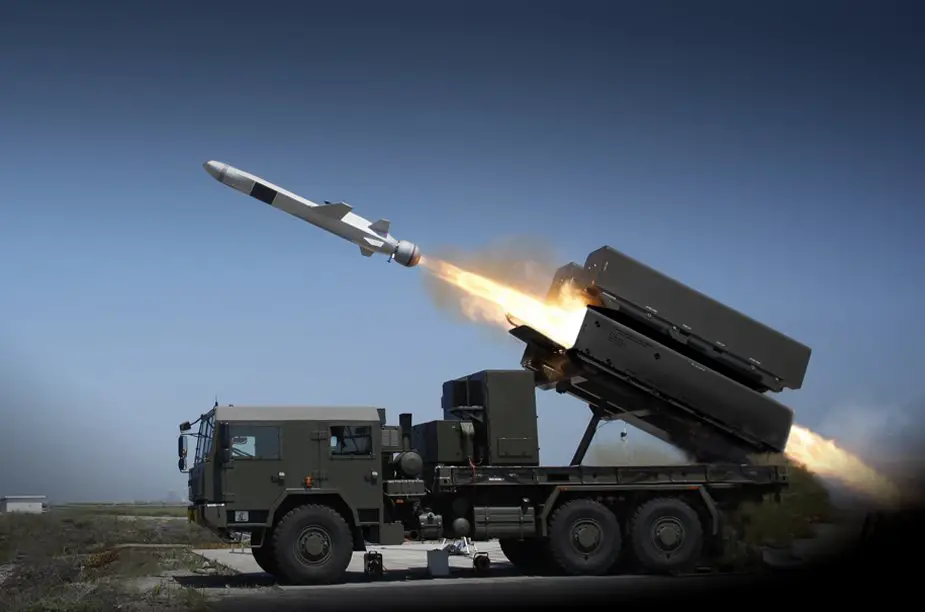Breaking news
US approves sale to Latvia of Naval Strike Missile Coastal Defense System.
According to information published by the US DoD on May 3, 2023, the State Department has made a determination approving a possible Foreign Military Sale to the Government of Latvia of Naval Strike Missile Coastal Defense System and related equipment for an estimated cost of $110 million.
Follow Navy Recognition on Google News at this link
 Naval Strike Missile Coastal Defense System. (Picture source: Kongsberg)
Naval Strike Missile Coastal Defense System. (Picture source: Kongsberg)
The Government of Latvia has requested to buy a Naval Strike Missile Coastal Defense System (NSM CDS), including tactical, telemetered, and training missiles; containers; mobile operational platforms; integration equipment; ordnance handling equipment (OHE); training equipment and aids; technical publications and data; training; spares; U.S. Government and contractor technical and product support or assistance; and other related elements of logistical and program support. The estimated total cost is $110 million.
The proposed sale will improve Latvia’s capability to meet current and future threats in the Baltic Sea maritime domain. Latvia’s increased coastal defense capability and interoperability with U.S. and NATO armed forces will contribute to both U.S. and Latvian defense and security objectives in the Baltics. Latvia will have no difficulty absorbing this equipment into its armed forces.
About the NSM
The Naval Strike Missile is an anti-ship and land-attack missile developed by Kongsberg Defence & Aerospace (KDA), a Norwegian company. Originally known as Nytt sjømålsmissil (meaning "New sea target missile"), it succeeded the Penguin missile and was later marketed under the name Naval Strike Missile.
As of 2022, it has been selected by countries including Norway, Poland, Malaysia, Germany, the United States, Japan, Romania, Canada, Australia, and Spain.
The NSM has a mass of 400 kg (880 lb) with booster and 350 kg (770 lb) without booster. It measures 3.96 m (13 ft) with booster and 3.48 m (11 ft 5 in) as a bare missile.
The missile's width is 700 mm (2 ft 4 in) when stowed and 1.36 m (4 ft 6 in) when wings are deployed. It has a titanium-cased penetrating blast and controlled fragmentation warhead that weighs 120 kg (260 lb).
The missile's propulsion system is a Microturbo TRI-40 turbojet with a solid rocket booster. The NSM has an operational range of over 200 km (110 nmi; 120 mi) and the NSM 1A has a range of 250 km (130 nmi; 160 mi).
It can fly at sea level or sea skimming altitude, and has a maximum speed of Mach 0.93 (316 m/s; 1,040 ft/s). Its guidance system includes GPS-aided INS (GAINS), laser altimeter, and TERCOM. The missile can be launched from naval ships and land-based vehicles.




























